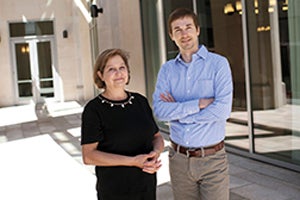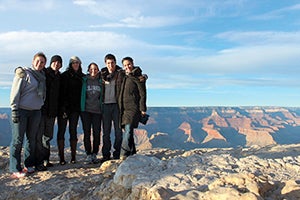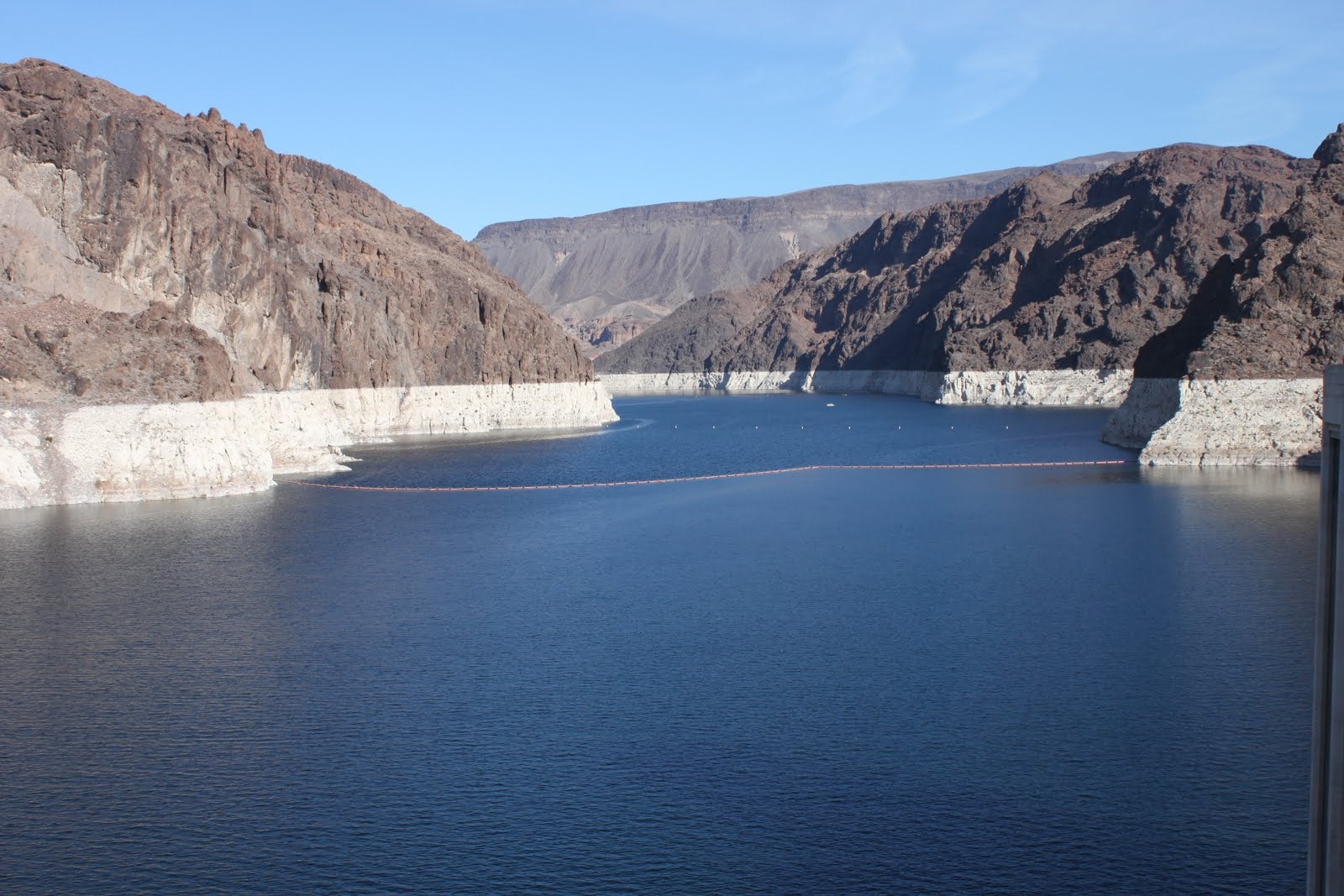The flood-ravaged province of Sindh in Pakistan is about as far from Harvard Law School as a law student can get. But that’s where Madison Condon ’14 and S.J.D. candidate Erum Sattar went this winter as part of an interdisciplinary team studying the country’s management of the Indus, a river governed by a 19th-century water system that’s crumbling under 21st-century environmental, political and population challenges. In April they presented their observations at a Harvard conference on water federalism issues.

The Indus study is part of the Water Security Initiative, a collaborative research program across seven Harvard schools, including the law school, on the management challenges in water basins in Australia, Brazil and the United States, along with Pakistan. It’s one of many ways that students in the Environmental Law Program are involved in hands-on projects related to environmental issues.
The scope of the Environmental Law Program has grown significantly since Professor Jody Freeman LL.M. ’91 S.J.D. ’95 launched it six years ago “with the ambition of building the best environmental law and policy program in the world.” She served in 2009-2010 as White House counselor for energy and climate change, and brings that experience into the classroom.
Richard J. Lazarus ’79, a leading expert in environmental and natural resources law and veteran Supreme Court advocate (see Q&A), joined the faculty last fall after serving on the president’s commission investigating the BP oil spill.
The Emmett Environmental Law and Policy Clinic, directed by Wendy Jacobs ’81, has flourished since being established as a cornerstone of the program five years ago. And this August, Kate Konschnik, environmental counsel for Sen. Sheldon Whitehouse (D-R.I.), will become the program’s new policy director.
The program is designed on three pillars, says Freeman: an expanded set of course offerings, the clinic and a new emphasis on long-term policy initiatives. Its students are addressing a range of environmental issues through a legal lens, including climate change, air and water quality, carbon capture and sequestration, hazardous waste management, environmental justice, public-land management, the impact of industrial agriculture and aquaculture, the effects of hydraulic fracturing, or “fracking,” and the growth of renewable energy. A few of their projects are described in these pages.
A Sarbanes-Oxley for the Offshore Drilling Industry?
This year, in the wake of President Barack Obama’s (’91) decision to open up new areas to drilling in the Arctic, students in the clinic, under Jacobs’ supervision, have been examining dozens of regulatory regimes, looking for ways to ensure that when an industry regulates itself, it does so effectively.

In March, as the Department of the Interior was in the midst of creating new safety and environmental standards for offshore drilling, Chase Romney ’12 and two other students presented their findings to directors of two agencies.
They found that one of the best examples of effective industry self-regulation resulted from the Sarbanes-Oxley Act—the controversial law requiring top management of public companies to certify that they have put financial oversight and management systems in place, and opening those companies up to potential criminal and civil liability for failure to do so. As Romney explains: “In terms of the offshore-drilling industry, if we can give industry control while making sure they exercise that control properly, it could be the ideal solution. But you need to make sure management has some vested interest in basing their system on the best practices available.”
Normally, a young lawyer would not have the opportunity to make such a presentation for at least five to eight years out of law school, says Jacobs. Romney sees the project in a similar way. “It was a unique experience and absolutely stands out as one of the highlights of my law school career,” he says.
Fracking Protections

For the last several years, HLS students in classes on energy law have been studying the impacts of oil and gas extraction. At the same time, students in the clinic have been focused on a project studying the gap in regulation of fracking—the practice of accessing natural gas in underground shale deposits by injecting water and chemicals to create cracks in the bedrock. Joshua Herlands ’12 worked on a guide for landowners in Ohio approached by energy companies interested in leasing their land to reach the gas below. Part of the project involved explaining in plain English the potential health and environmental consequences of fracking, including contaminated air, water and land.But the students also worked on something new—drafting specific language that Ohio landowners could put into their leases to give themselves some measure of protection. “State regulations are lagging on this,” says Herlands. “We looked at the protections Ohio law and federal environmental law do provide, and suggested what landowners might want to layer on top of that.”
Herlands found the project, with its combination of independent work and extensive feedback from Jacobs and her team, “hugely valuable,” in terms of both the skills he learned and the knowledge he gained for his planned career in the financing of clean technologies. And the guide has been valuable for those on the ground in Ohio, too, Jacobs says: “We’ve gotten dozens of calls and emails from landowners, community organizations, extension schools and regulators thanking us for preparing the guide and asking us for copies.” The clinic is now in the process of preparing similar guides for other states. And Konschnik, the program’s new policy director, is set to launch a larger fracking initiative to analyze alternative regulatory regimes that might govern the practice.
Are Renewable Energy Incentives Legal?

In response to a request from the head of a state agency, four students in the Environmental Law Program spent an intensive month this winter analyzing the legal vulnerability of state renewable energy programs. Under the supervision of Professors Freeman and Lazarus, and with the help of Assistant Professor Mark Wu (an expert on international trade law), the students examined whether the incentives might run afoul of either the commerce clause of the Constitution or international trade law, and suggested ways that the state could design these programs to be immune from legal attack. The research is part of a larger clean- energy project launched by the program.
For Rachel Heron ’12, one of the students on the team, the autonomy she’s been given on this and other projects within the Environmental Law Program has helped her gain “confidence and specific expertise” for her chosen field of environmental litigation. “The work has given me a taste for how to formulate answers to questions that are not merely academic or hypothetical, but which actually impact environmental decision-making,” she says.
The Hat Trick
But it’s the Water Security Initiative that typifies perhaps better than any other project the ambitions of the Environmental Law Program. “It’s a signature thing we’ve done in terms of both promoting constructive thinking and also providing fabulous pedagogical opportunities for students,” says Lazarus. “You want hat tricks in this area—things that are great for public service, great for scholarship and great for teaching.”
Jason Robison, an S.J.D. candidate, is one of six students examining water-rights issues in the Colorado River basin as part of the initiative. Growing up in Salt Lake City, he always had a strong interest in natural-resources issues. But it wasn’t until he worked on water-law cases while clerking for the Oregon Supreme Court that he realized “on a deeper level how integral water has been in shaping the makeup of the modern American West.”

For the initiative, he and the other students spent three weeks traveling around the West, meeting with local and state officials, scientists, NGOs, and members of Native American tribes and environmental groups, and visiting places like Hoover Dam, Lake Mead and the Grand Canyon in an effort to understand the uses of and competing demands on the river. In an area of intense development, agricultural use, and environmental fragility, where Mexico, Native American tribes and seven U.S. states have all been allocated part of the river’s flow, and where cities including Los Angeles, Las Vegas and Phoenix depend on it, demand has exceeded supply since the late 1990s. And with climate change—“the elephant in the room,” as Robison calls it—the river’s flow is projected to diminish by 10 to 30 percent over the next 30 to 50 years.
Meeting with the stakeholders in person made clear to Robison and the other students what a stubbornly difficult issue this is.
“There are no good guys and bad guys. … And with water demands being what they are, it’s overwhelming to think of how everyone is going to get their cut of the pie,” he says. (One partial solution, the Colorado basin team suggests, may be the controversial idea of letting stakeholders—including municipalities, Native American tribes and perhaps states—lease their water rights.)
But for Robison, looking at the river itself provided an even starker view of the issues involved. He recalls the group standing at the Imperial Dam in Arizona, the last place the Colorado River is captured before it flows into Mexico. From there, the water allocated to cropland in California’s arid Imperial Valley is diverted from the river via a concrete canal—3.1 million acre-feet, or more than a trillion gallons a year. “For every one iota of water left in the Colorado, three times that amount was being diverted into the middle of a desert. The canal system was mind-blowing. … I knew they got a lot of water, but when I saw that ratio firsthand, it brought the scope of that water right to life,” he says.
The Greatest Influence
As Freeman considers the growth of the Environmental Law Program, she emphasizes that “HLS has a real role to play in the energy-climate space,” and that its greatest influence will come through its students, whether, like Robison, Condon and Heron, they plan to pursue careers in the environmental field, or whether they decide to go in other directions.
“We are training people who will be elected to higher office, even the presidency, or who will be political appointees, or leaders of the biggest companies and nonprofits,” she says. “They can affect these issues wherever they wind up.”
